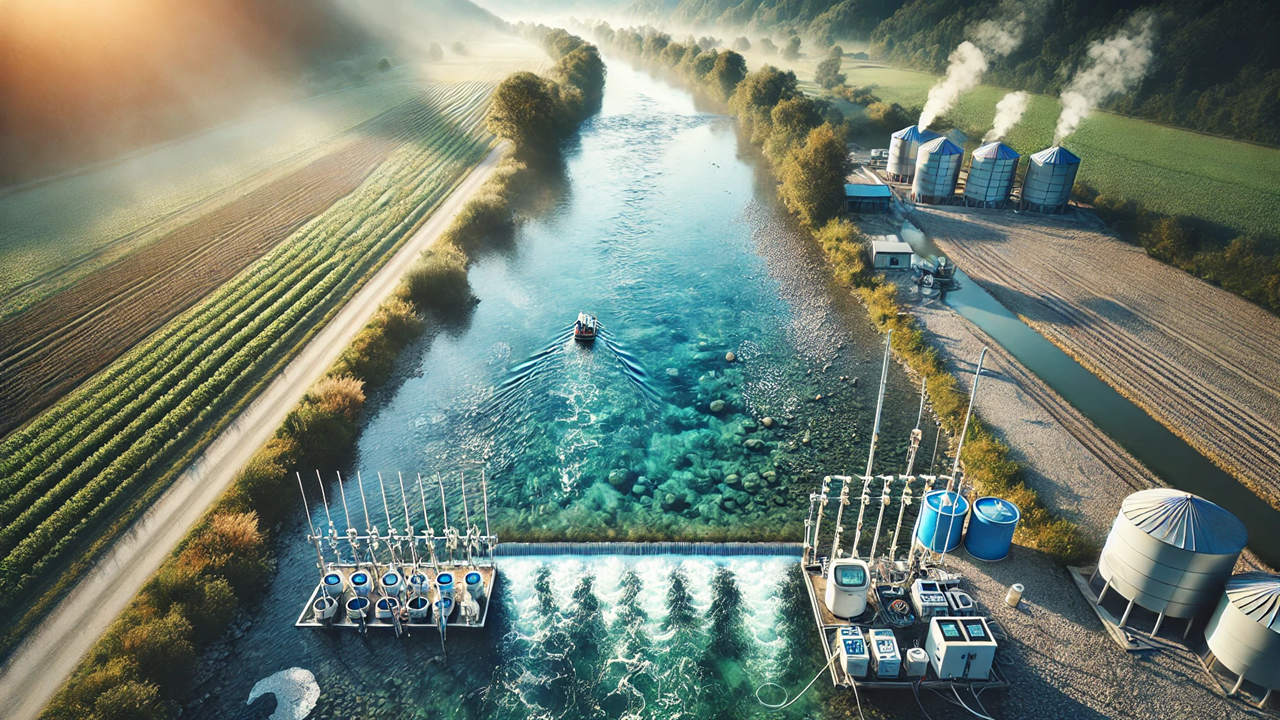Balancing the Flow: Why Water Quality Matters in Sustainable Water Resource Management
The World Bank's report, "Accounting for Water Quality: Insights for Operational Task Teams," advocates for the integration of water quality monitoring into water resource management. The report outlines a framework for task teams to track and manage pollutants in water systems, ensuring that water quality is maintained alongside water quantity. It highlights how vital this integration is for sustainable water use, environmental health, and public safety.

For generations, the global focus on water resource management has revolved around ensuring enough water supply to meet the needs of agriculture, industries, and communities. However, the critical issue of water quality has often taken a backseat, leading to compromised water ecosystems and human health risks. According to the recent World Bank report, "Accounting for Water Quality: Insights for Operational Task Teams," monitoring and managing water quality is as crucial as water quantity to achieve sustainable water usage and ecosystem preservation.
The Overlooked Factor: Water Quality
Though essential, the traditional emphasis on water quantity fails to account for the complex relationship between water usage and its subsequent degradation in quality. Whether it’s drinking water, water for irrigation, or supporting industrial processes, each use impacts the overall quality of the water returned to the ecosystem.
Water quality standards play an integral role in safeguarding public health, agricultural productivity, and environmental integrity. These standards define the acceptable levels of pollutants and contaminants, such as chemicals, heavy metals, and pathogens, in water intended for various uses. However, in many cases, government agencies that manage water quantity operate separately from those responsible for water quality, which leads to fragmented data collection and weak resource management.
The Need for Integrated Water Quality Monitoring
Sustainable Development Goal (SDG) 6, which seeks to ensure the availability and sustainable management of water and sanitation for all, highlights the need for an integrated approach. The World Bank report introduces a structured framework aimed at assisting operational task teams in including water quality in their broader water management efforts. The goal is simple but critical: combine water quantity and quality accounting to enhance the health of aquatic ecosystems and improve water resource sustainability.
The report presents a nine-step framework that begins with defining the scope and scale of water quality accounts. This involves identifying where water is being used and discharged, selecting monitoring locations, and choosing the right water quality parameters to test. For example, industries may discharge water with high levels of chemicals, whereas agricultural areas may affect water quality by increasing nutrient loads, such as phosphorus and nitrogen. Accurate pollutant load calculations, based on this monitoring, enable clearer insights into how specific activities impact overall water quality.
Understanding Water Quality Parameters
A core component of water quality accounting involves selecting the right parameters to monitor. Parameters such as biochemical oxygen demand (BOD), nitrogen levels, and total suspended solids (TSS) offer insights into water quality conditions and the potential impacts on downstream ecosystems and human health. These measurements provide critical data to assess whether water meets national or international standards before its use or reintroduction into natural water bodies.
The report emphasizes the importance of consistent monitoring at both abstraction and discharge points. For instance, water quality data collected from rivers, reservoirs, and groundwater sources before they are used—and again when wastewater is returned—can help calculate the total load of pollutants entering and exiting the water system. This approach allows task teams to accurately apportion the pollution load across different activities, identifying the key drivers of water quality degradation.
The Case for Action: Better Management, Better Outcomes
The key takeaway from the report is clear: without considering water quality, water resource management will continue to fall short of achieving sustainable goals. Managing water quality is not merely about meeting compliance standards but ensuring that the environment and human activities coexist in a balanced and healthy way.
The report also underscores that water management efforts should be comprehensive, involving monitoring across all scales—from small irrigation projects to entire river basins. In the case of a single agricultural project, for instance, the report recommends monitoring groundwater quality, surface runoff, and return flows, ensuring that water used for irrigation does not degrade the water quality for downstream users.
By incorporating water quality accounting into water management practices, decision-makers can make more informed choices that reflect both the quantity and quality of available water resources. This dual approach is essential for safeguarding ecosystems, preventing water-borne diseases, and maintaining the viability of water for future generations.
As the world grapples with growing water scarcity and pollution, the need for a comprehensive, integrated approach to water resource management has never been more urgent. The World Bank’s report serves as a blueprint for operational task teams to incorporate water quality monitoring into their broader water accounting systems. In doing so, it calls on governments, industries, and communities to rethink how water is managed—from its source to its return to the environment. Without a keen focus on water quality, the long-term sustainability of water resources remains at risk.
- FIRST PUBLISHED IN:
- Devdiscourse










